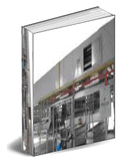JW Latex Consultants (and Rubber Consultants,乳胶顾问) offer solutions to your
problems in Natural Rubber latex and Synthetic Rubber latex processing and the manufacturing of latex products (condoms, catheters, medical gloves, baby teats and soothers, toy balloons etc) Quick answers through e-mails are possible at reasonable cost.
__________________________
This Site Is Best Viewed With Mozilla Firefox Browser. If You Are Viewing With Internet Explorer, It Is Advisable to Switch to Mozilla Firefox By Going to This Link -> http://www.mozilla.org/en-US/firefox/new/
It Is Free to Download
__________________________
Send Your Enquiry and Orders To: woonsungliang@yahoo.com.sg
 Problem Solving Through E-Mails with John Woon Latex Consultants Is Possible
Problem Solving Through E-Mails with John Woon Latex Consultants Is Possible
可以通过电子邮件与JW乳胶顾问来解决问题

__________________________
Please kindly donate to support the maintenance of this site. We'd appreciate it very much.
__________________________
__________________________________________________________________________
Why Are Butyl and synthetic Polyisoprene Latices Called "Artificial Latices"?
Manufacturer: We were told that Butyl and synthetic Polyisoprene latices are actually termed "Artificial latics". Why and how are these made?
John Woon (Senior Latex Consultant): Good question!
Both Butyl rubber and synthetic Polyisprene rubber cannot be produced using the conventional emulsion polymerization as in the case of Nitrile and Polychloroprene latices.
To obtain the latex of Butyl and synthetic Polyisoprene rubbers, the rubber is first dissolved or swollen in a solvent followed by emulsification in water and subsequent removal of the solvent by distillation. Hence the term "Artificial Latices".
The emulsion is subjected to high shear to get a particle size of less than 1000 nm. Needless to say, the choice of emulsifiers (surfactants) is of utmost importance. For more details please refer to my separate report to you.



















































.jpg)
.jpg)



.jpg)
.jpg)
.jpg)
.jpg)
.jpg)
.jpg)
.jpg)
.jpg)
.jpg)
.jpg)
.jpg)
.jpg)
.jpg)
.jpg)
.jpg)
.jpg)
.jpg)
.jpg)













































0 Comments:
Post a Comment
<< Home